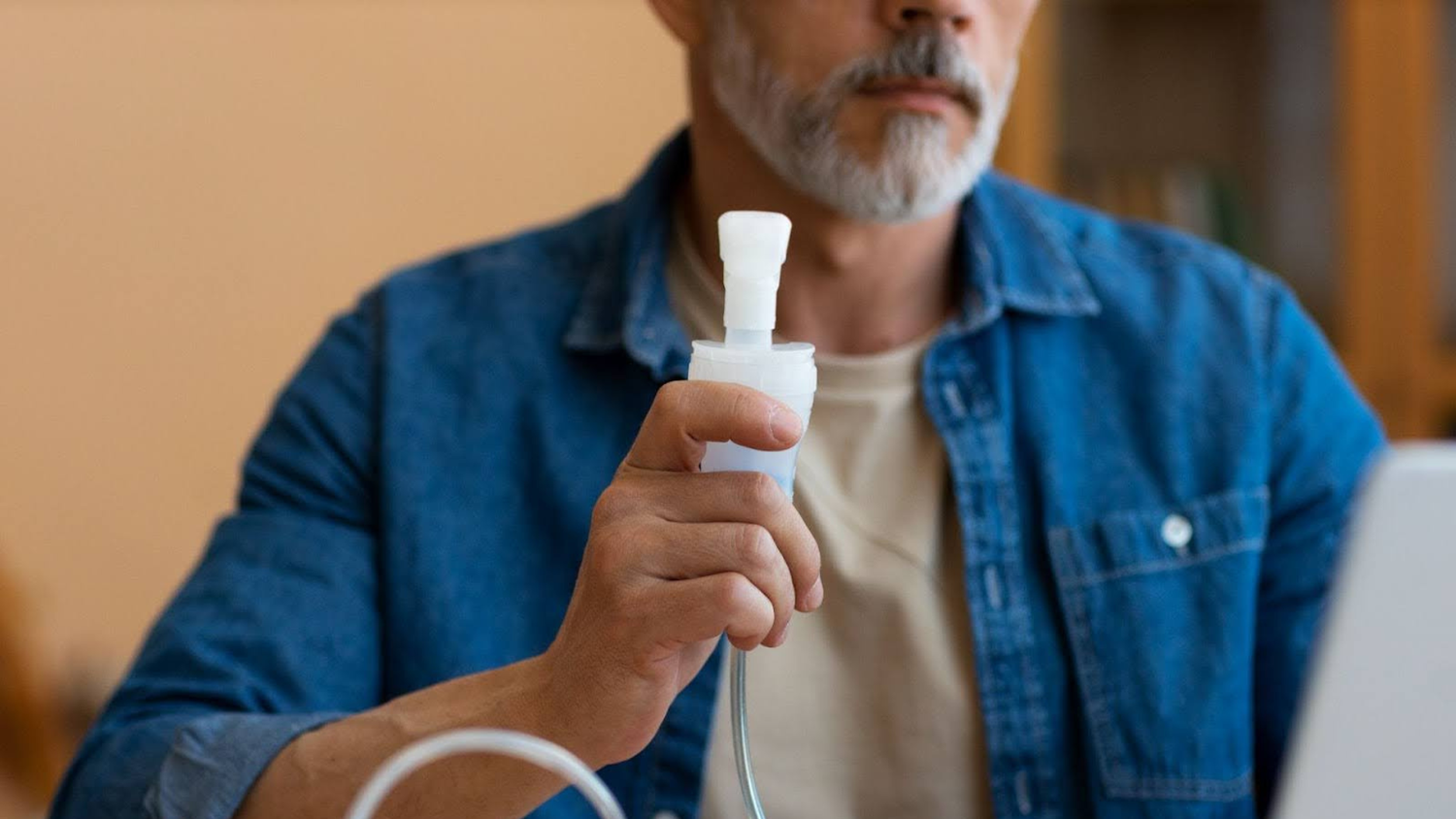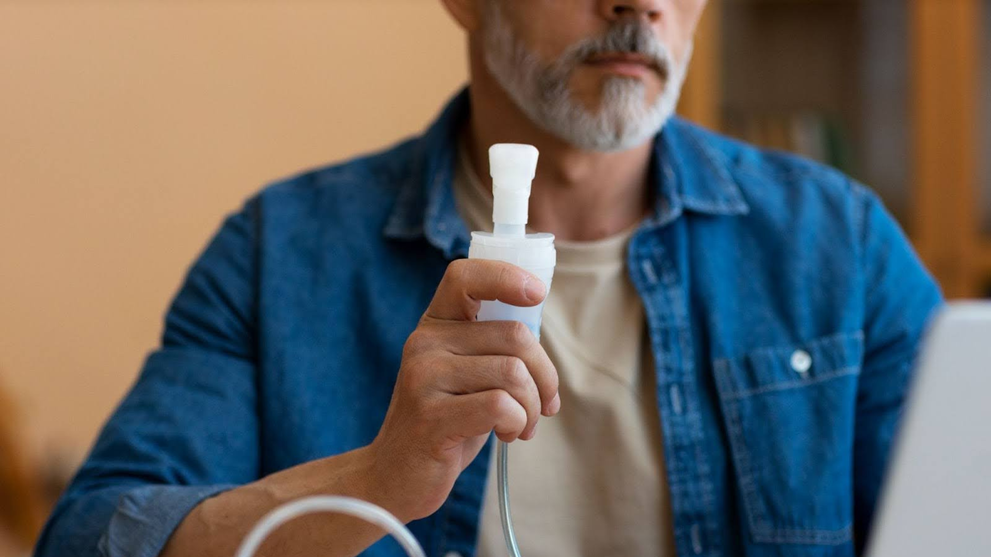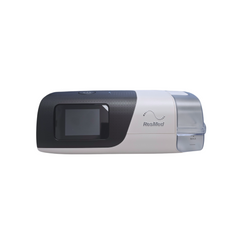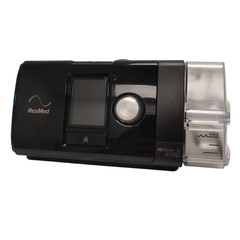Key Takeaways:
- Effective Management Of Sleep Apnea: The effective management of sleep apnea through CPAP therapy and related treatments significantly improves sleep quality and reduces associated health risks. However, it typically does not provide a permanent cure.
- Lifestyle Changes For Symptom Reduction: Making lifestyle adjustments, such as maintaining a healthy weight, avoiding alcohol before bedtime, and improving sleep posture, can significantly reduce apnea symptoms and enhance the effectiveness of ongoing medical therapies.
- Ongoing Reassessment Of Treatment Plans: Regular follow-ups with healthcare specialists are vital, as individual health conditions, device settings, and available technologies evolve, ensuring treatment remains optimized for long-term success.
At Help Medical Supplies, our commitment to better breathing defines who we are. Every product we offer, from oxygen concentrators to sleep therapy devices, is selected for performance, safety, and comfort. Our team works tirelessly to make advanced respiratory care affordable and accessible, combining trusted brands with expert guidance to deliver exceptional care. We don’t just provide equipment, we build confidence through dependable service and genuine care.
Many people wonder if sleep apnea goes away once treatment begins. While therapies like CPAP and lifestyle adjustments dramatically improve sleep quality and health outcomes, the condition often requires long-term management. Understanding what causes sleep apnea and how treatment options evolve helps set realistic expectations. The right combination of medical support, consistent use, and healthy habits can make lasting relief achievable.
In this blog, we will explore how sleep apnea treatment works, whether symptoms can improve or resolve over time, and what long-term solutions help maintain better sleep and lasting health.
What Happens In The Body During Sleep Apnea
Understanding what happens inside the body during sleep apnea treatment helps explain why consistent care is essential. The condition goes far beyond snoring; it’s a recurring cycle of oxygen deprivation and stress that disrupts nearly every central system in the body. For practical support and comfort, modern devices like the ResMed AirSense 11 CPAP Machine help users maintain steady breathing patterns and achieve more restful, restorative sleep.
How Airway Blockage Interrupts Breathing
When asleep, throat and tongue muscles naturally relax. In individuals with sleep apnea, this relaxation narrows or closes the airway, resulting in partial or complete breathing pauses that can last several seconds and occur multiple times each night. These interruptions prevent a steady oxygen flow, causing the body to struggle to restore normal breathing repeatedly.
How The Brain Responds To Interrupted Breathing
Each pause in breathing lowers oxygen levels, prompting the brain to wake the body briefly. These quick arousals restore airflow but fragment sleep, preventing deep rest and recovery. Over time, repeated sleep disruptions leave individuals feeling fatigued and unable to reach the restorative sleep stages essential for physical and mental recovery.
The Strain On The Heart And Circulatory System
Each apnea episode activates the body’s stress response, constricting blood vessels and increasing heart rate. This constant pressure spikes blood pressure and taxes the cardiovascular system. Over time, untreated sleep apnea increases the risk of hypertension, arrhythmias, heart disease, and stroke, as the body repeatedly endures oxygen fluctuations and hormonal stress.
Effects On Brain Function And Daily Performance
Interrupted sleep affects concentration, memory, and emotional stability. Oxygen deprivation impairs brain function, leaving individuals foggy, irritable, and prone to daytime sleepiness. These effects accumulate, impacting productivity, alertness, and overall cognitive health, and can sometimes lead to dangerous situations, such as drowsy driving or poor decision-making.
Broader Health Impacts Beyond Sleep
The consequences of sleep apnea extend into metabolism, immune strength, and hormonal balance. Oxygen deprivation and poor-quality sleep interfere with insulin regulation and inflammation control, contributing to chronic fatigue, weight gain, and reduced immunity. Without treatment, these health effects gradually worsen, affecting overall well-being.
Why Sleep Apnea Rarely Resolves Without Intervention
Many patients wonder, Does sleep apnea have a cure? In most cases, the condition requires ongoing therapy rather than a permanent fix. The underlying anatomical and neurological factors rarely resolve on their own, making consistent treatment essential. Solutions such as the New CPAP Machine line offer advanced features and quiet operation, helping users manage symptoms effectively and sleep more comfortably.
Structural And Anatomical Causes That Persist
In obstructive sleep apnea, the relaxed tissues in the throat block airflow during sleep. Contributing factors, such as weight gain, jaw alignment, or enlarged tonsils, tend to persist or worsen over time. Even with weight loss, anatomical or genetic traits often continue to obstruct breathing, making medical or surgical treatment necessary for lasting improvement.
Neurological Factors In Central Sleep Apnea
Central sleep apnea stems from the brain’s inconsistent signaling to breathing muscles. Because neurological pathways don’t self-correct, this form of apnea rarely improves without medical therapy. Specialized equipment or targeted treatment helps maintain airflow and stabilize oxygen levels during sleep.
How Poor Sleep Reinforces The Condition
Untreated sleep apnea creates a harmful cycle of fatigue, inactivity, and declining health. Disrupted sleep lowers energy, leading to weight gain, high blood pressure, and higher risks of heart disease and diabetes. These conditions, in turn, make apnea symptoms worse, compounding the problem over time.
Neuroplasticity And Entrenched Breathing Patterns
Repeated oxygen drops train the brain to tolerate abnormal breathing patterns. Over time, this adaptation prevents natural recovery, making consistent therapy essential to retrain respiratory control and restore stable breathing.
The Importance Of Long-Term Management
CPAP and BiPAP therapy remain the most reliable treatments for maintaining open airways and continuous airflow. Though not curative, they significantly reduce symptoms, improve sleep quality, and prevent complications. Ongoing therapy and healthy habits together provide the best foundation for managing sleep apnea and protecting long-term health.
How CPAP Therapy Supports Lasting Airway Stability
Sleep apnea therapy works by keeping the airway open throughout the night, preventing repeated interruptions that affect the body’s oxygen balance. Consistent use of CPAP helps restore energy, improve mood, and protect cardiovascular health. Devices such as the ResMed AirSense 11 CPAP combine innovative technology, quiet performance, and comfort settings that make nightly therapy easier to maintain.
- Maintaining Airway Stability: CPAP delivers continuous, pressurized air through a mask, preventing airway collapse and maintaining steady oxygen levels throughout the night. This consistent airflow stops breathing pauses that disrupt deep sleep.
- Immediate & Non-Invasive Treatment: CPAP begins working right away once it is properly fitted and adjusted. It’s a safe, non-surgical option that provides fast relief from apnea symptoms without altering airway anatomy.
- Restoring Healthy Sleep Patterns: Regular CPAP use helps reduce nighttime interruptions and promotes deep, restorative sleep. Better rest leads to improved energy, fewer morning headaches, and more consistent sleep quality.
- Reducing Secondary Health Risks: Consistent CPAP therapy helps lower the risks of high blood pressure, heart disease, and fatigue. Stable oxygen levels throughout the night protect cardiovascular function and overall well-being.
- Enhancing Daytime Focus & Mood: Better oxygenation during sleep improves alertness, concentration, and mood stability. Many users report sharper focus and increased daytime productivity.
- Overcoming Early Discomfort: New users may experience air leaks or discomfort with the mask, but proper fitting, pressure adjustments, and humidification can quickly improve comfort and compliance.
- Modern Features For Convenience: Today’s CPAP machines feature heated humidifiers, quieter motors, and portable battery options, making therapy easier to maintain both at home and while traveling.
- A Long-Term Solution for Better Health: While CPAP doesn’t cure sleep apnea, it manages symptoms effectively with continued use. Nightly therapy promotes stable breathing, restorative rest, and long-term cardiovascular protection.
Used consistently, CPAP therapy improves sleep quality, restores energy, and promotes long-term health, enabling individuals to manage sleep apnea with confidence and lasting results.
Pediatric Sleep Apnea: Unique Considerations And Treatments
Children with sleep apnea require tailored care and sleep disorder solutions that prioritize comfort, fit, and consistency. Pediatric masks and adjustable airflow systems allow therapy to adapt as children grow. For families seeking reliable and child-friendly options, the 3B Medical Luna CPAP offers gentle, effective pressure delivery, suitable for both younger users and adults alike.
Recognizing Symptoms And Diagnosis
Pediatric sleep apnea symptoms can be subtle. Instead of loud snoring or exhaustion, children may have restless sleep, bedwetting, night sweats, or behavioral issues such as irritability and difficulty concentrating. Some individuals may sleep in unusual positions or exhibit growth delays due to disrupted sleep. Diagnosis begins with a thorough evaluation and often includes an overnight sleep study (polysomnography) to assess breathing patterns and determine severity.
Causes And Risk Factors
The most common cause of pediatric sleep apnea is the enlargement of the tonsils and adenoids, which obstruct the airway during sleep. Other factors include obesity, genetic conditions like Down syndrome, and craniofacial abnormalities. While obesity is a primary cause in adults, structural and developmental issues are more common in children. Identifying these factors helps guide personalized treatment.
Treatment And Ongoing Care
Surgical removal of tonsils and adenoids (adenotonsillectomy) often resolves symptoms. When surgery isn’t an option or proves insufficient, CPAP therapy may be recommended. Pediatric CPAP machines and masks are designed for smaller faces to ensure comfort and effectiveness. Lifestyle adjustments, allergy treatment, and weight management can further support recovery.
Family Support And Follow-Up
Managing pediatric sleep apnea involves collaboration among pediatricians, sleep specialists, and ENT surgeons. Parental education and routine monitoring play a crucial role in ensuring the success of therapy as children grow and develop. With early intervention and ongoing care, most children experience significant improvement, resulting in better sleep, improved concentration, and healthier overall development.
When To Reassess Your Treatment Plan With A Specialist
Ongoing sleep apnea management ensures that therapy stays effective as health and technology evolve. Regular reviews help adjust pressure settings, replace worn components, and enhance overall comfort. Upgrading to devices like the ResMed AirSense 10 CPAP can offer quieter operation, advanced data tracking, and improved humidity control, looking for long-term success.
Recognizing Changes That Affect Therapy
Shifts in weight, activity levels, or overall health can alter how well your current setup works. Weight loss may reduce the need for airway pressure, while weight gain or the development of new conditions, such as allergies or cardiovascular issues, can make therapy less effective. Warning signs such as morning headaches, fatigue, or increased snoring often indicate that your machine settings or mask fit may need adjustment.
Evaluating Equipment And Technology Updates
Sleep therapy technology improves rapidly. Newer CPAP and BiPAP models offer improved comfort, quieter operation, and more detailed sleep tracking. If your machine is several years old or you experience mask leaks, discomfort, or dryness, it may be time for an upgrade. Specialists can recommend devices that enhance fit, improve portability, and promote long-term comfort and well-being. Staying current with replacement schedules for masks, tubing, and filters also ensures reliable performance.
Coordinating Care During Lifestyle Or Health Changes
Significant lifestyle changes, like quitting smoking, changing medications, or planning surgery, can affect your sleep apnea management. Consult your specialist to review therapy adjustments that align with your evolving needs. Even minor medical or lifestyle shifts can influence breathing patterns during sleep and should be considered in your care plan.
Staying Proactive About Follow-Ups
Don’t wait for yearly appointments if symptoms return or your machine data shows decreased usage or an increase in apnea events. Scheduling a timely review enables your provider to address issues promptly and adjust settings as needed. Maintaining regular communication with a sleep specialist helps ensure your treatment continues to deliver adequate, restorative rest and long-term health stability.
Final Thoughts
Does sleep apnea go away with treatment? For most, managing sleep apnea is a long-term commitment rather than a quick fix. While treatment, including CPAP therapy, BiPAP machines, or lifestyle adjustments, can drastically improve sleep quality and overall health, these interventions control symptoms rather than offering a permanent cure. But with careful adherence to therapy, many people experience transformative relief from day-to-day fatigue, snoring, and related health complications.
At Help Medical Supplies, we know the journey with sleep apnea doesn’t end after your first machine purchase or fitting. Each individual’s needs can evolve, so our team is here to provide guidance, ensuring your therapy remains as practical and comfortable as possible.
Read Also:
- How Your Sleep Position Can Influence Your CPAP Therapy
- What Women Should Know About Their Risk For Sleep Apnea
- Unpacking the Connection Between Sleep Apnea and Long COVID
Frequently Asked Questions About Does Sleep Apnea Go Away
Can weight loss effectively resolve sleep apnea in the long term?
Weight loss can lessen sleep apnea severity, especially for those with obesity-related cases. Some experience significant improvement, but complete resolution isn’t guaranteed, requiring continued monitoring and support.
Are there surgical options to permanently treat sleep apnea?
Surgical options, such as UPPP or Inspire therapy, can reduce symptoms in select patients. Results vary, and most still require ongoing follow-up care or supplemental treatment afterward.
Will dental devices fix sleep apnea forever?
Dental devices help manage mild to moderate sleep apnea by repositioning the jaw to maintain airflow. They don’t permanently cure the condition and must be used nightly.
Does sleep apnea go away on its own with lifestyle changes?
Healthy habits such as weight management, quitting smoking, and limiting alcohol improve symptoms but rarely cure sleep apnea completely. Medical therapy should continue alongside lifestyle changes.
Can children outgrow sleep apnea after treatment?
Some children improve or outgrow sleep apnea, particularly after tonsil or adenoid removal. Others may require ongoing therapy and monitoring as their symptoms develop and evolve.
Is sleep apnea always a lifelong condition?
For most adults, sleep apnea is a long-term but treatable condition. Consistent therapy and updated equipment help manage symptoms effectively, supporting healthier sleep and long-term well-being.
Sources:
- Epstein, Lewis J., et al. “Clinical Guideline for the Evaluation, Management and Long-Term Care of Obstructive Sleep Apnea in Adults.” Journal of Clinical Sleep Medicine, vol. 5, no. 3, Aug. 2015, pp. 263-276. American Academy of Sleep Medicine, https://aasm.org/wp-content/uploads/2017/07/Evaluation-Management-and-Long-Term-Care-of-OSA-in-Adults-1.pdf.
- Patil, Subramanyam P., et al. “Treatment of Adult Obstructive Sleep Apnea with Positive Airway Pressure: An American Academy of Sleep Medicine Clinical Practice Guideline.” Journal of Clinical Sleep Medicine, vol. 15, no. 2, Feb. 2019, pp. 335-343. American Academy of Sleep Medicine, https://jcsm.aasm.org/doi/pdf/10.5664/jcsm.7640.
- “The Role of Weight Management in the Treatment of Adult Obstructive Sleep Apnea: An Official American Thoracic Society Clinical Practice Guideline.” American Journal of Respiratory and Critical Care Medicine, vol. 198, no. 6, Sept. 2018, pp. e70-e87. American Thoracic Society, https://www.thoracic.org/statements/sleep.php.
- “A Guide to CPAP Compliance.” Sleep Foundation, 2025, https://www.sleepfoundation.org/cpap/cpap-compliance.







